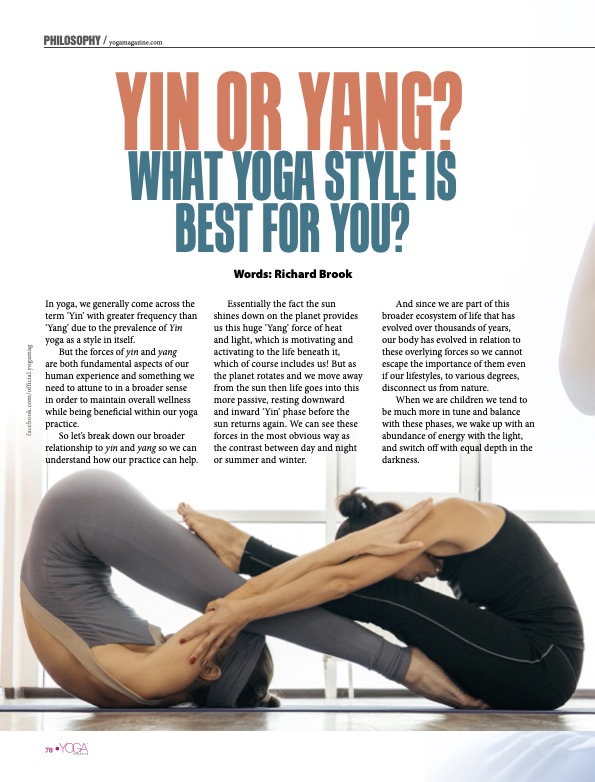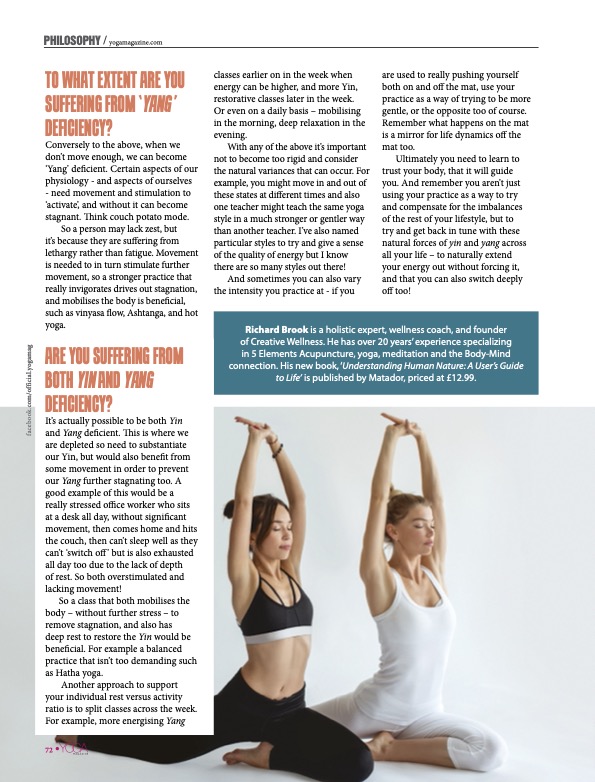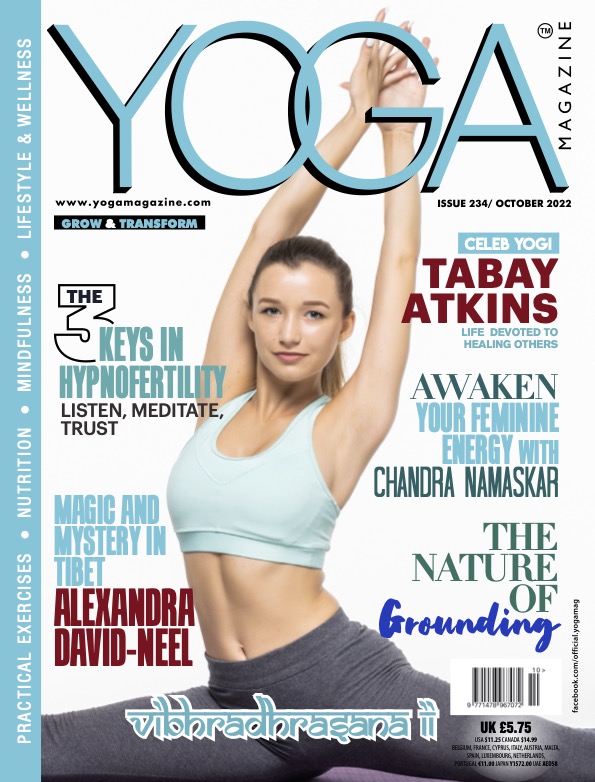What yoga style is best for you? In yoga we come across the term ‘Yin’ with greater frequency than ‘Yang’ due to the prevalence of Yin yoga as a yoga style of itself. But the forces of yin and yang are both fundamental aspects of our human experience and something we need to attune to in order to maintain overall wellness, as well as being beneficial within our yoga practice.
So let’s breakdown our broader relationship to yin and yang so we can understand how our practice can help.
Essentially the fact the sun shines down on the planet provides us this huge ‘Yang’ force of heat and light, which is motivating and activating to the life beneath it, which of course includes us! But as the planet rotates and we move away from the sun then life goes into this more passive, resting downward and inward ‘Yin’ phase before the sun returns again. We can see these forces in the most obvious way as the contrast between day and night or summer and winter.
And since we are part of this broader ecosystem of life that has evolved over thousands of years, our body has evolved in relation to these overlying forces so we cannot escape the importance of them even if our lifestyles, to various degrees, disconnect us from nature.
When we are children we tend to be much more in tune and balance with these phases, we wake up with an abundance of energy with the light, and switch off with equal depth in the darkness.
However, fast forward to adulthood and an abundance of overstimulation, stress, 24/7 communication culture, noise and light pollution, poor rest and poor sleep skews our relationship to yin and yang.
For example, in Chinese medicine we often relate to people as being ‘Yin’ deficient – basically the Yang phases of someone’s life have amplified so far as to start to consume the Yin, as remember these phases have a relationship with one another, so this will naturally affect what’s happening in the physiology of the body. It’s a bit like if you suddenly decided to make summer 8 months long it naturally will shorten the time and space for the more Yin seasons where life regenerates.
Before you rush to the nearest Yin class, it’s also important to understand that Yin and Yang are never absolute, they operate in relativity between two or more things. For example, Vinyasa flow would be classed as yin compared to power yoga, but classed as yang compared to restorative yoga. And crucially, yoga on the whole, compared to most of our lifestyle and exercise activities is Yin as it stimulates the relaxation response and introverts our attention, particularly if it contains a significant aspect of meditation or relaxation. So first things first, practicing yoga of any kind is generally a good move!
But it’s also important we try and fine tune our practice by answering which of these questions may apply most.
1: To what extent are you suffering from ‘Yin’ deficiency?
Most of us, even in robust health, have some ‘Yin’ deficiency as we don’t tend to rest deeply enough (sometimes it’s not a case of resting more, but resting deeper) remember it’s considered that 20 minutes in the relaxation response can have the equivalent benefits of between 2 and 4 hrs sleep, so we really need the depth of rest! An example of where yin deficiency can arise is when someone is very, very busy, has a really active and overstimulating job or lifestyle, dashing about with lots of movement. This creates a ‘wired’ state where even after an exhausting day, week (or year!) it can still be difficult to sit still or sleep. This creates a sense of restlessness, which can eventually lead to a collapse of energy and ongoing fatigue.
So choosing gentle classes that don’t further deplete the system and work to substantiate the depth of rest is beneficial, slower paced classes with a strong emphasis on relaxation or meditation, such as restorative, yin or Dru yoga.
2) To what extent are you suffering from ‘Yang’ deficiency?
Conversely to the above, when we don’t move enough, we can become ‘Yang’ deficient. Certain aspects of our physiology - and aspects of ourself - need movement and stimulation to ‘activate’, and without it can become stagnant. Think couch potato mode.
So a person may lack zest, but it’s because they are suffering with lethargy rather than fatigue. Movement is needed to in turn stimulate further movement, so a stronger practice that really invigorates, drives out stagnation and mobilises the body is beneficial, such as vinyasa flow, Ashtanga and hot yoga.
3) Are you suffering from both Yin and Yang deficiency?
It’s actually possible to be both Yin and Yang deficient. This is where we are depleted so need to substantiate our Yin, but would also benefit from some movement in order to prevent our Yang further stagnating too. A good example of this would be a really stressed office worker who sits at a desk all day, without significant movement, then comes home and hits the couch, then can’t sleep well as they can’t ‘switch off’ but is also exhausted all day too due to the lack of depth of rest. So both overstimulated and lacking movement!
So a class that both mobilises the body – without further stress – to remove stagnation, and also has deep rest to restore the Yin would be beneficial. For example a balanced practice that isn’t too demanding such as Hatha yoga.
-----------------
Another approach to support your individual rest versus activity ratio is to split classes across the week. For example, more energising Yang classes earlier on in the week when energy can be higher, and more Yin, restorative classes later in the week. Or even on a daily basis – mobilising in the morning, deep relaxation in the evening.
With any of the above it’s important not to become too rigid and consider the natural variances that can occur. For example you might move in and out of these states at different times and also one teacher might teach the same yoga style in a much stronger or gentler way than another teacher. I’ve also named particular styles to try and give a sense of the quality of energy but I know there are so many styles out there!
And sometimes you can also vary the intensity you practice at - if you are used to really pushing yourself both on and off the mat, use your practice as a way of trying to be more gentle, or the opposite too of course. Remember what happens on the mat is a mirror for life dynamics off the mat too.
But ultimately you need to learn to trust your body, that it will guide you. And remember you aren’t just using your practice as a way to try and compensate for the imbalances of the rest of your lifestyle, but to try and get back in tune with these natural forces of yin and yang across all your life. To naturally extend your energy out without forcing it, and that you can also switch deeply off too!




For more information please feel free to visit Richard's site, or of course book on a programme and come and meet him in person!

